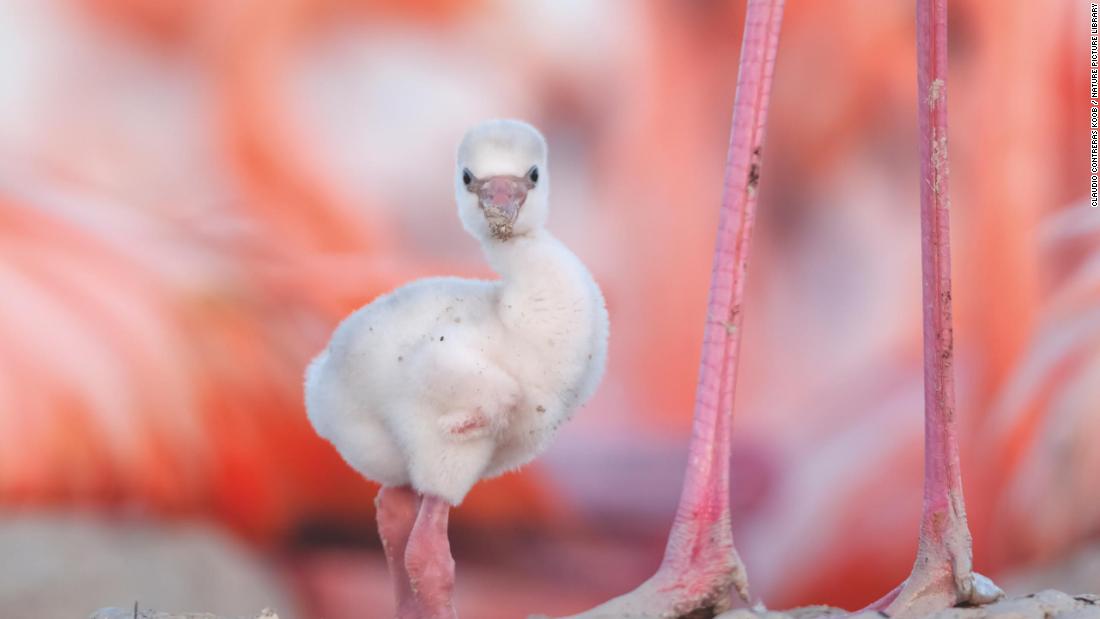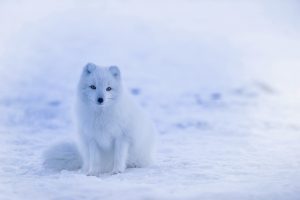
Since he was four years old, photographer Claudio Contreras Koob has been obsessed with flamingos: their vibrant pink feathers, horn-like curved beaks, and elegant, poised necks.
Born and raised in Mexico City, Koob visited the Yucatán Peninsula every year during school holidays. His father built a house on sand dunes in the port village of Chuburná, between the sea and wetlands, and together they watched flamingo colonies gather in the lagoons and muddy swamps that stretched for miles behind the house.
“It was a very beautiful sight when we were able to spot a pink-orange mass of birds in the distance,” says Koob. “That stayed in my memory.”

The Caribbean flamingo lives in salty wetland and coastal waters around Mexico, the US and the Caribbean. Credit: Claudio Contreras Koob / Nature Picture Library
Koob hopes his intimate portraits of the bird will help others to “fall in love with flamingos” and inspire them to care about the wetlands where they live.
From lab to lens
Koob’s childhood fascination with nature led him to study wildlife biology at the National Autonomous University of Mexico, where he took a course in microphotography and discovered “what the language of photography could do,” he says.
Combining his passions, Koob focused on conservation photography when he left university. He joined the International League of Conservation Photographers which in 2009, asked him to capture the tagging of flamingo chicks in Yucatán.
“If you disturb one, they start screaming and flying away, and you can cause a panic. They could leave all the eggs, and abandon the colony,” says Koob.

Koob spent years gaining the trust of the flamingos so that he could photograph their nesting colonies and young chicks. Credit: Claudio Contreras Koob / Nature Picture Library
Koob says his “slow approach” to photography enabled him to gather intimate images of the flamingos. He often wore camouflage, army crawling across muddy ground to get close to the birds without scaring them.
On some occasions, he took a boat into the lagoons before dawn so the birds would be accustomed to his presence by sunrise, and stayed until after nightfall. “That is tough, with the sun and 40 degrees (heat),” says Koob. “It’s very consuming for the body.”
Pretty in pink
Unlike humans, flamingos are well adapted for their extreme environment.

Flamingos use their hooked beaks to feed on shrimp, mollusks and algae that are rich in carotenoids, the pigment that gives them their pink coloring. Credit: Claudio Contreras Koob / Nature Picture Library
Their diet comprises algae, shrimps and mollusks containing large amounts of carotenoids — the same pigments that give fruits and vegetables like carrots, pumpkins, and tomatoes their coloring — and which are responsible for the flamingo’s signature hot-pink appearance, says Koob.
Wetlands under threat
Flamingo conservation has been a high priority for Mexico since the 1970s and ’80s, when it established two federal wetland reserves on the Yucatán peninsula, later designated as UNESCO Biosphere Reserves.

Up to 50,000 tourists come to see the flamingos every year at Ría Celestún (pictured) — although Koob warns that this could disrupt their eating habits. Credit: Claudio Contreras Koob / Nature Picture Library
Now, Koob is back in Yucatán, staying in his childhood holiday home in Chuburná, photographing the wetlands. This time, horseshoe crabs are his focus, and he hopes he can continue to draw more attention to the wildlife and communities living there.
“For most people, the wetland is like a stinky, dark, creepy place. But it’s full of wonders — and the flamingo is just one of them,” says Koob.

